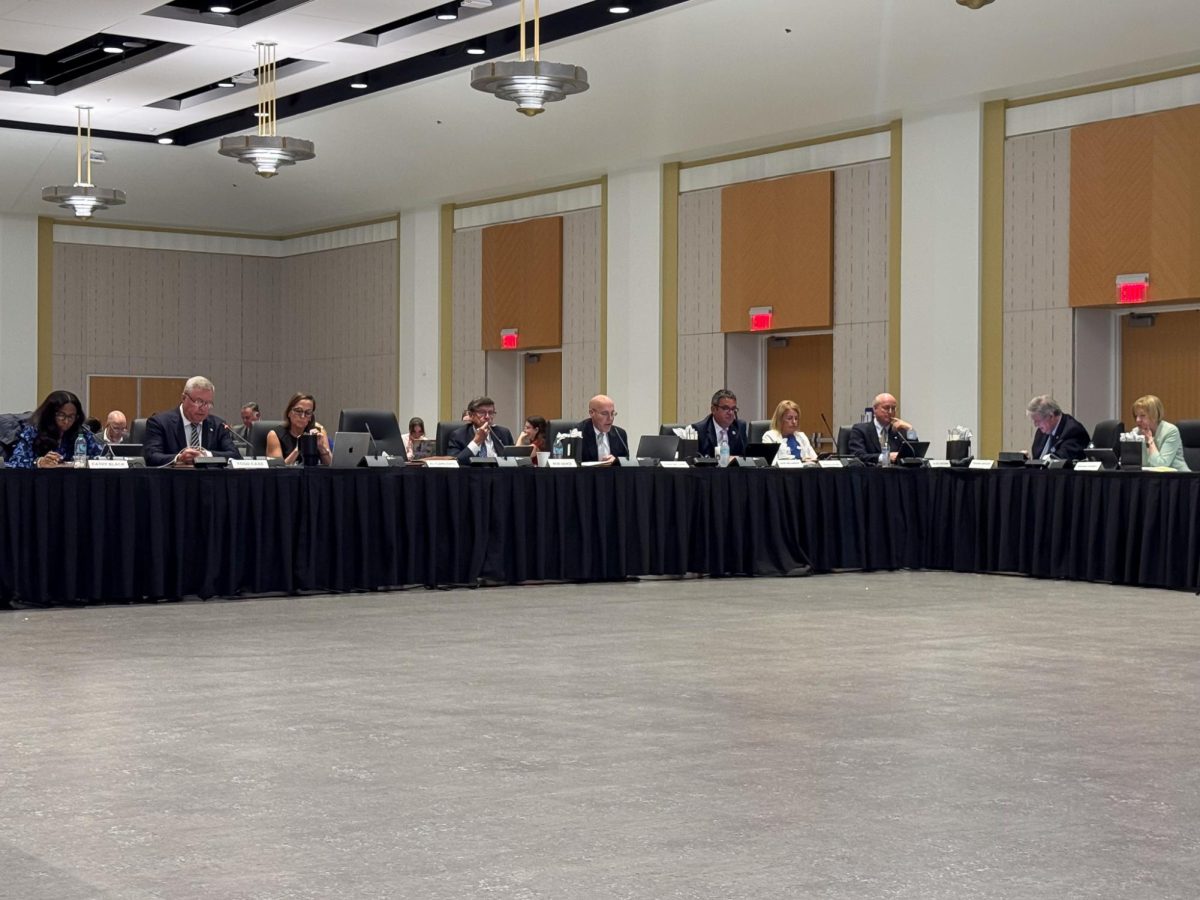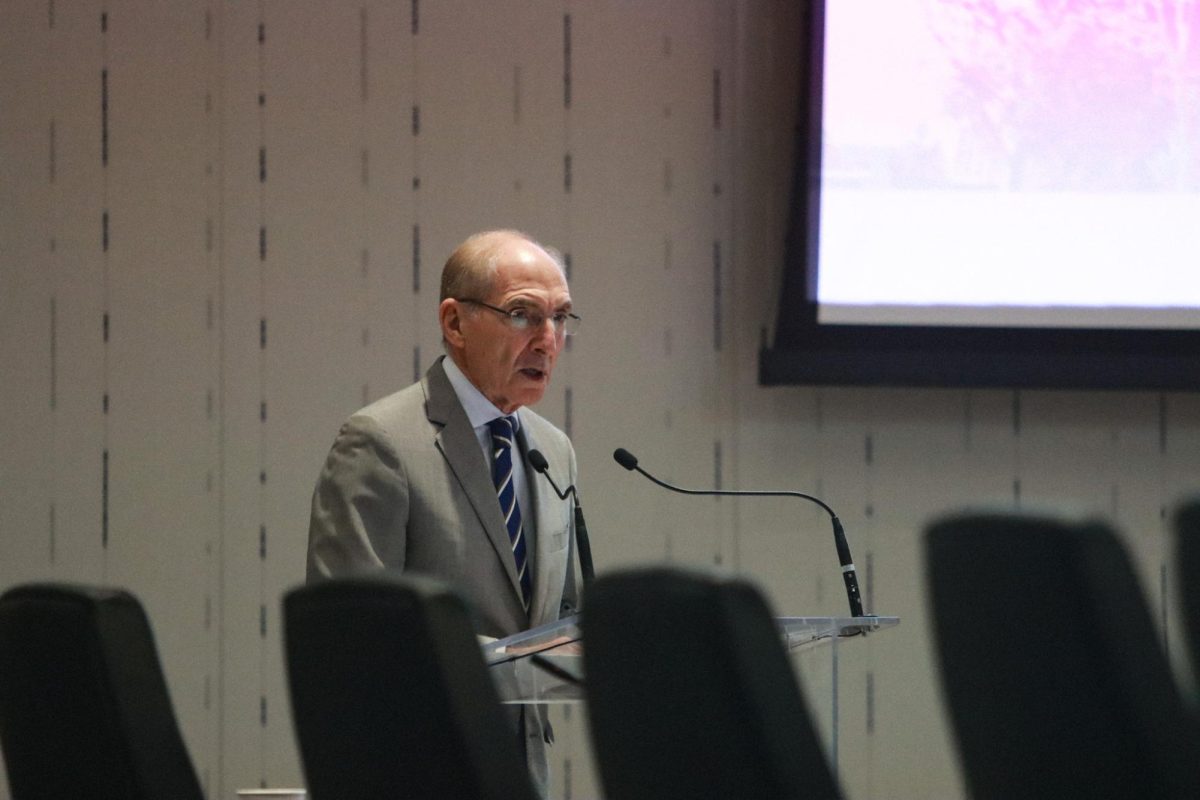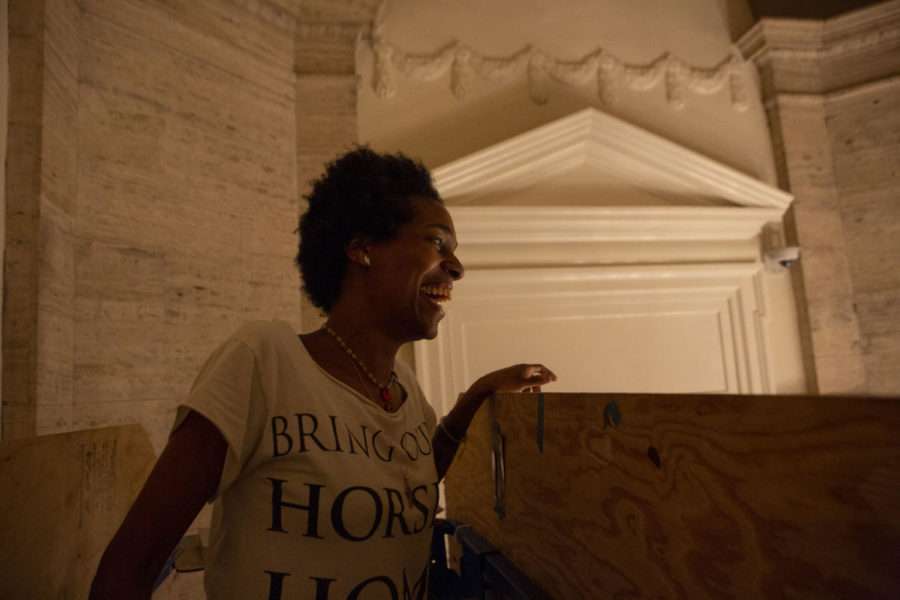Artist who created piece in response to Memorial Hall mural writes letter to UK community
April 8, 2019
Dear University of Kentucky community or more pointedly, Dear Students of Color,
I wanted to write to you for several reasons. Firstly, I highly respect, admire and am truly moved by the real work and commitment you have taken on, the call and demand for changes that will slowly create a school you can completely be proud of—a place to call home.
I understand all too well what it is like to be marginalized, overlooked, invisible (while other times feel spotlighted and under a microscope) on a predominately white campus. My four years at college were marked by protests and sit-ins. I remember the almost weekly calls for justice. We fought the administration against the ultra-right racist college-supported newspaper; protested the school’s investments in Apartheid-ruled South Africa, fought to change our alma mater to one that was inclusive (the former “Men of Dartmouth” was changed my senior year to reflect the co-ed campus it had been for years); fought for women’s rights on a campus that still suffered an Animal House mentality and for the LBGTQ community (oh, the horror stories I could tell you).
But I also wanted to reach out because I am the black immigrant female gay artist who created an artwork last summer in Memorial Hall whose goal was to face, challenge, question and instigate a dialogue with Ann Rice O’Hanlon’s extremely problematic mural. When I first thought of what to do, my initial instinct was “why not remove the black and brown figures from the mural, leaving only ghost-like shapes?” However, erasing and (in effect) defacing a work of art is a less powerful gesture than confronting what is there. We must dissect and critique our American histories, shed light on what’s hidden/buried, and expose this complicated landscape for all to investigate and interrogate. Our complex histories need to be wrestled with, even when they can’t be resolved. How do we reconcile dissent, multiplicity, simultaneity and paradox, which are imbedded in our country’s history? Erasing (or removal), we know, does not erase the historical facts of slavery and oppression.
READ: UK to cover Memorial Hall mural after student sit-in
I am fully aware of how elements of O’Hanlon’s mural (i.e. the portrayal of the lone Native American) aligns itself with a multitude of racist symbols out there—Native Americans as sport franchise mascots, sambo, blackface; the list goes on and on. Or Confederate monuments that honor racist, wretched and treasonous cowards. But the confederate monuments stem from a systematically repressive force and were unequivocally assertions of power erected (mostly) during the Jim Crow era and the rise of the Civil Rights movement. They were created to intimidate and remind blacks that the fight for white supremacy was alive and well—these monuments must be removed.
But O’Hanlon’s mural cannot be equated with them; she was charged with creating a historical painting, and black people (mostly subjugated) were a part of Kentucky’s history. Certain aesthetic and conceptual decisions reveal (what I believe to be) her acknowledgment (albeit possibly a superficial one) that America—and Kentucky specifically—was built by African-Americans. Artists are intentional in their decisions—she positioned the four slaves in the center of the mural; those figures are the linchpin. Kentucky, she recognizes, was built on their backs. She portrays the symbolism of industrialization—the railroad—literally on the backs of the slaves. I know I’d rather see an acknowledgment of slavery (notwithstanding the sanitized way it is portrayed here), then no acknowledgment at all. I get it. Why can’t we see black folks not suffering? Can we just see black characters living ordinary complex lives that white folks get to see? Not just as victims? But witnessing the portrayal of our ancestors’ narratives is necessary in understanding and living in contemporary America. Our country, as we know, is in perpetual irresolution.
I created Witness to honor black and brown Kentuckians and deepen the dialogue around this controversial and polarizing artwork. I appropriated, enlarged and reproduced the mural’s African-American and Native American figures, inserting them into the vestibule’s dome ceiling, which was gold leafed. I wanted the gold-leaf to reference sacred paintings, churches, and cathedrals from the Byzantine and Renaissance periods. This effectively transported and repositioned these anonymous figures into a heavenly space. My hope in using gold leaf was to elevate these oppressed figures—those deemed lowly—to the divine. The imagery in the mural depicts the subjugated performing mundane chores and activities (while neglecting to reveal their depth of servitude or the range of horrific acts that kept them there). My desire was to see the same figures, now transcribed on the gilded ceiling as a kind of rebirth—perhaps spiritually, but more immediately, through the our reinvestigation, interrogation, and reckoning with our country’s complex histories. Around the base of the dome is a Frederick Douglass quotation: “There is not a man beneath the canopy of heaven, that does not know that slavery is wrong for him.” This quote addressed the anonymous figures in the original mural as well as my relocated ones—calling out by name the historical sin that slavery represents.
I hoped my work would create a new context and new lens through which to view, critique and wrestle with O’Hanlon’s mural— allow a space for discourse, for new questions, reinvestigations. It was created too as a site for empathy and a site that could prompt one to action. I know this is a lot to ask of an artwork and we artists often do not succeed, but what else can we do? My dream for contextualizing O’Hanlon’s work with my own was to point to the complexity of human existence, to remind ourselves that the mural is just one artist’s perspective/interpretation (no more, no less), and to remember that art should, to quote James Baldwin, “expose the question that the answer hides.” If the art is removed, doesn’t it just give folks an out? An excuse not to remember painful realities? Historical amnesia? And negate the need for our continued fight?
Sincerely,
Karyn Olivier
Karyn Olivier is an artist who created the work in Memorial Hall, titled Witness, in response to Ann Rice O’Hanlon’s mural. More about her work can be seen here.






























































































































































